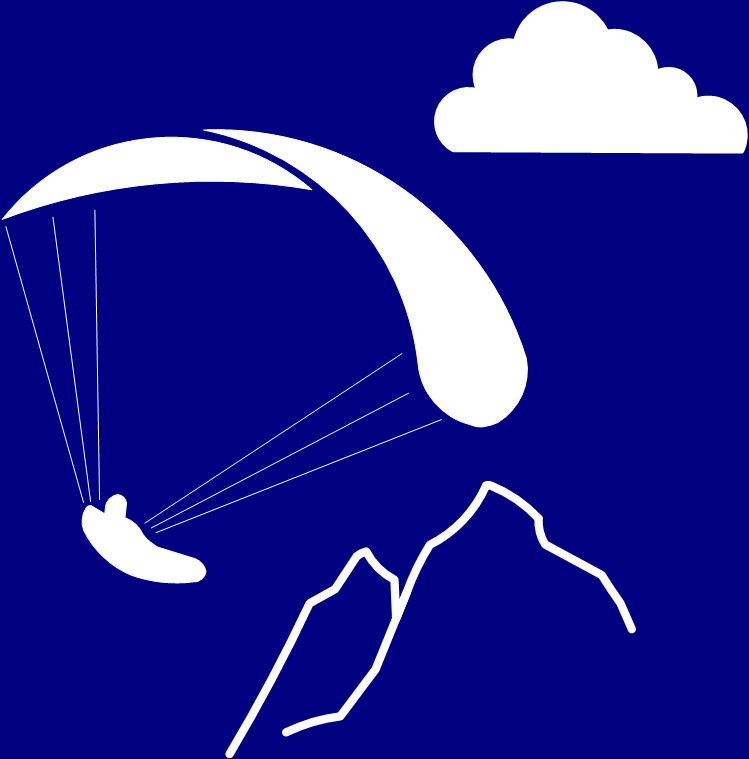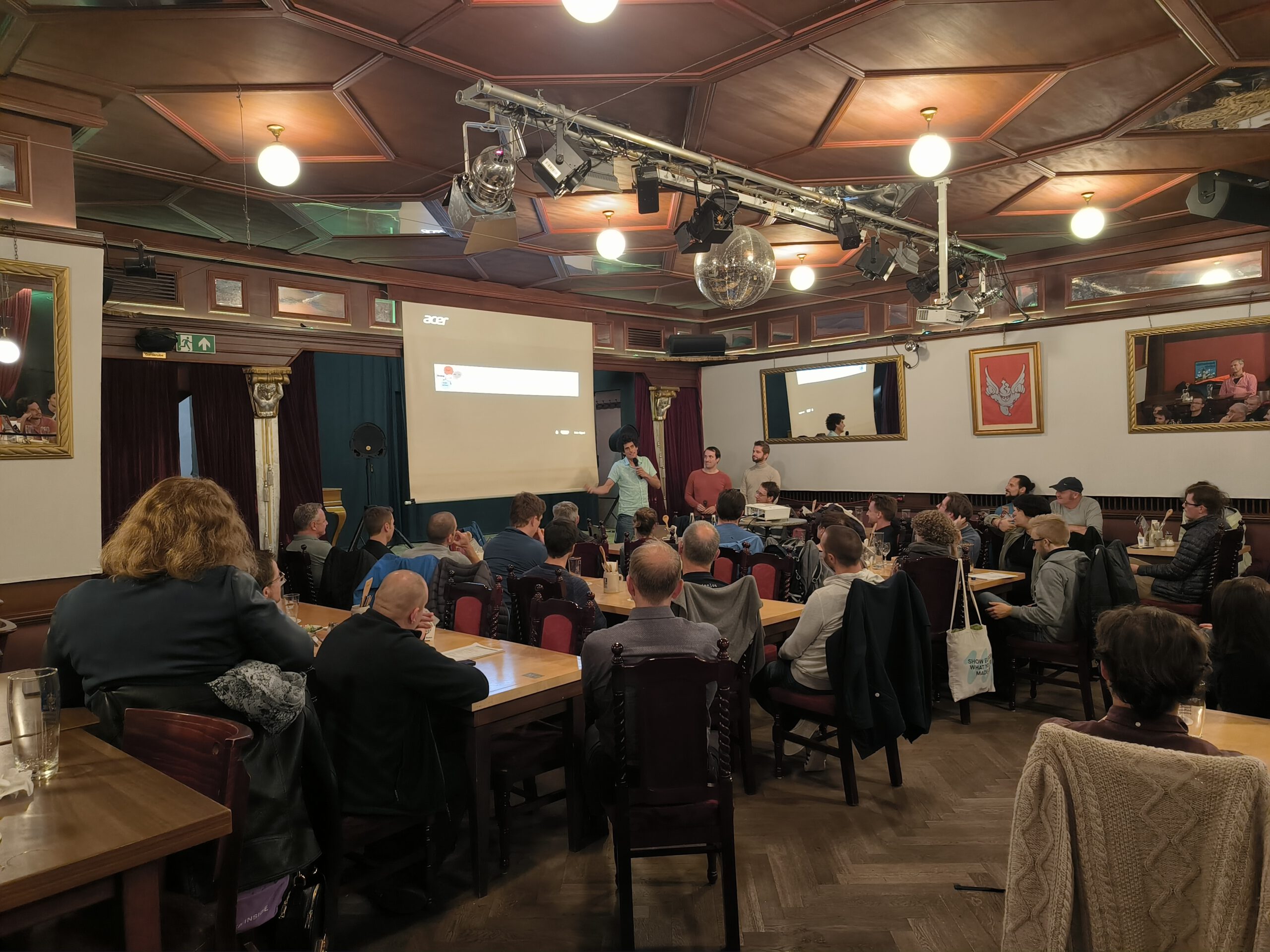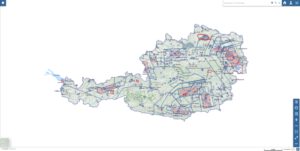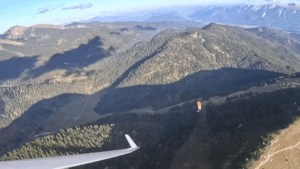The well-known paraglider pilot Pál Takáts was in Munich not to report on his participation in this year’s X-Alps, but to give a talk on acro flying. The lecture was organized by the Bodenlos board, many thanks for this. The event took place in the Wirtshaus zum Isartal. The following are excerpts from my transcript…
The presentation
His enthusiasm for acro flying ran like a red thread through the whole presentation. You could tell that it was important to him that the spark was passed on to us and motivated us that we shouldn’t necessarily start acro flying, but should at least do regular safety training. I think you can see from the photos I took during the talk just how committed he was:
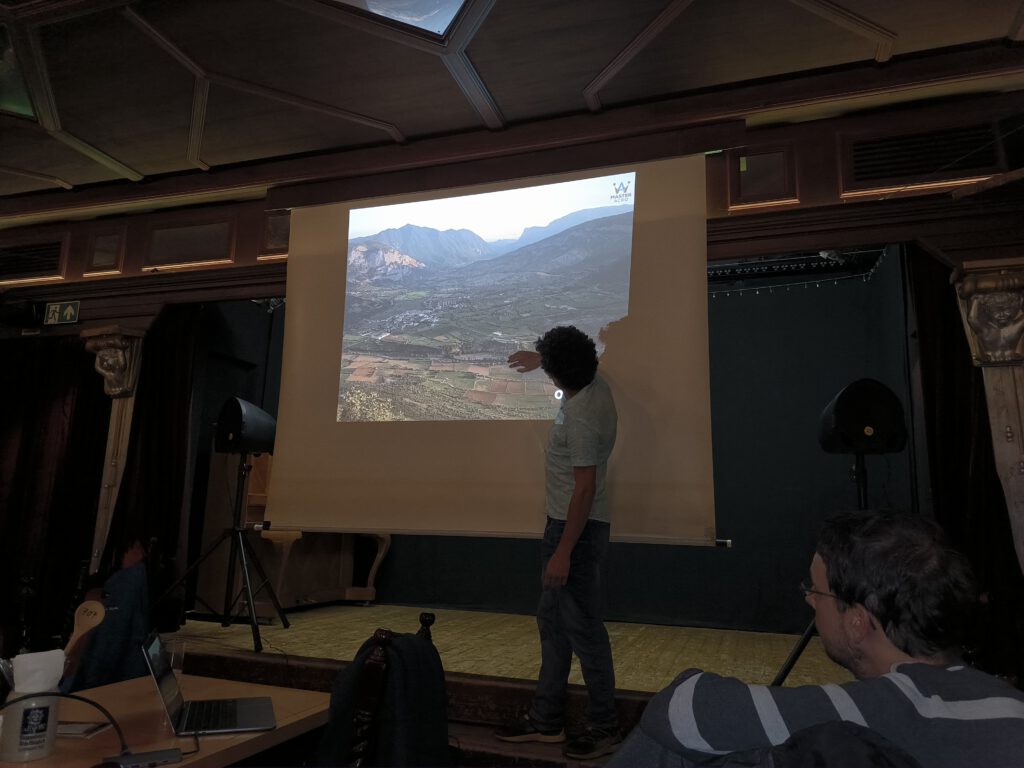
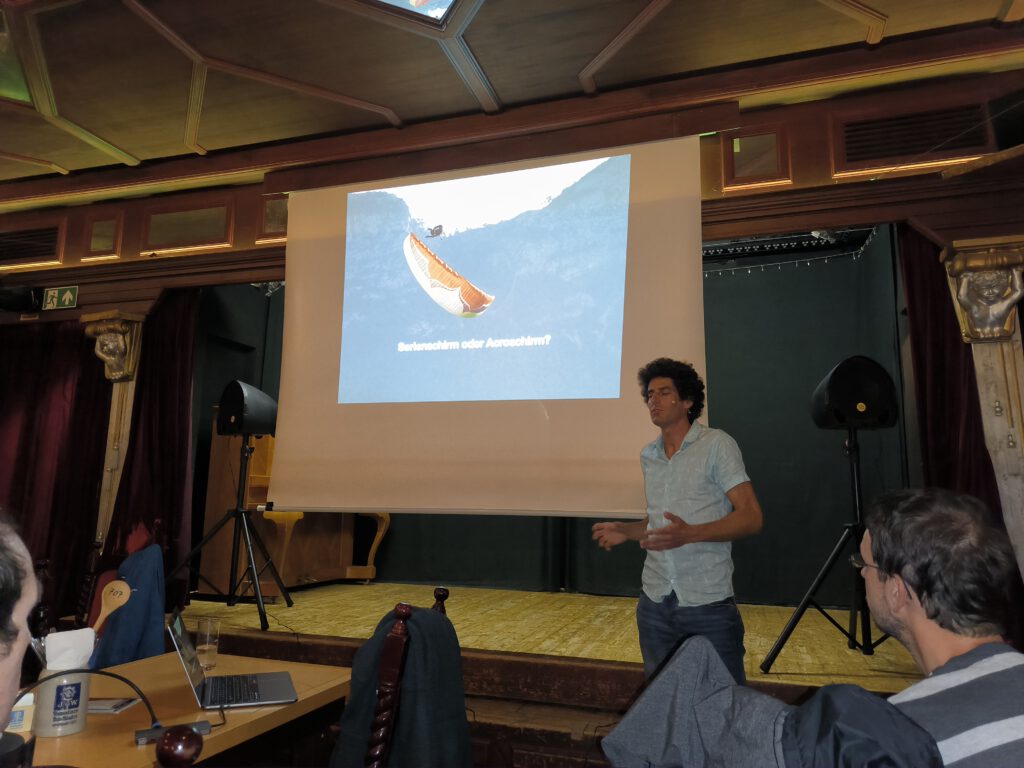
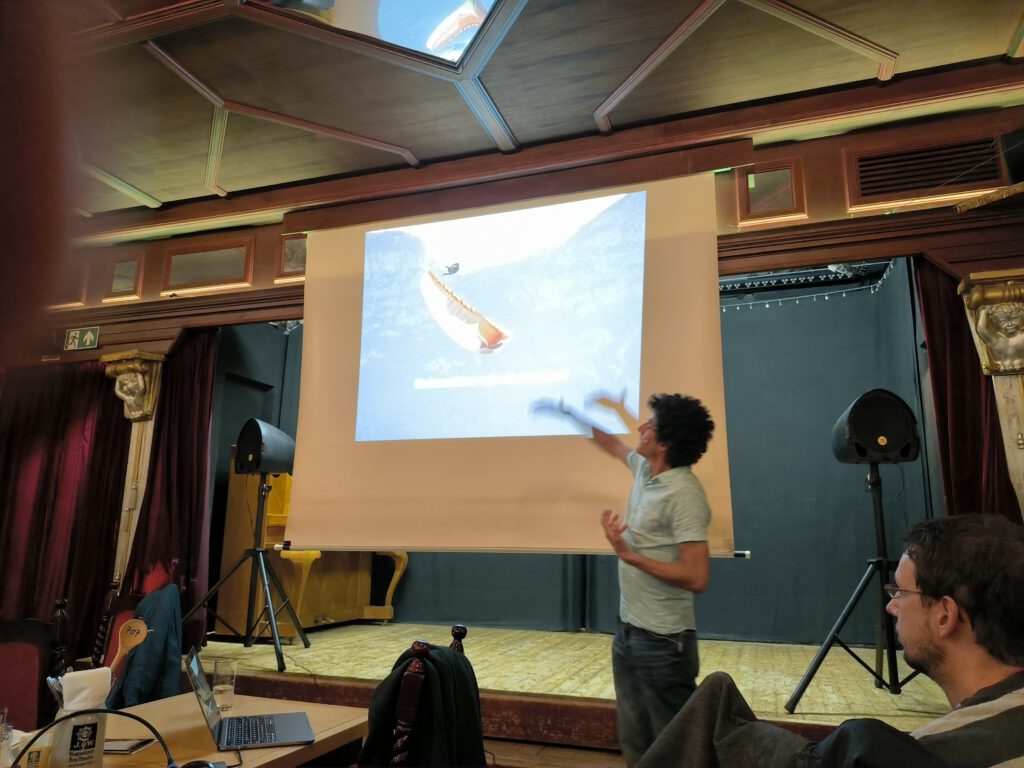

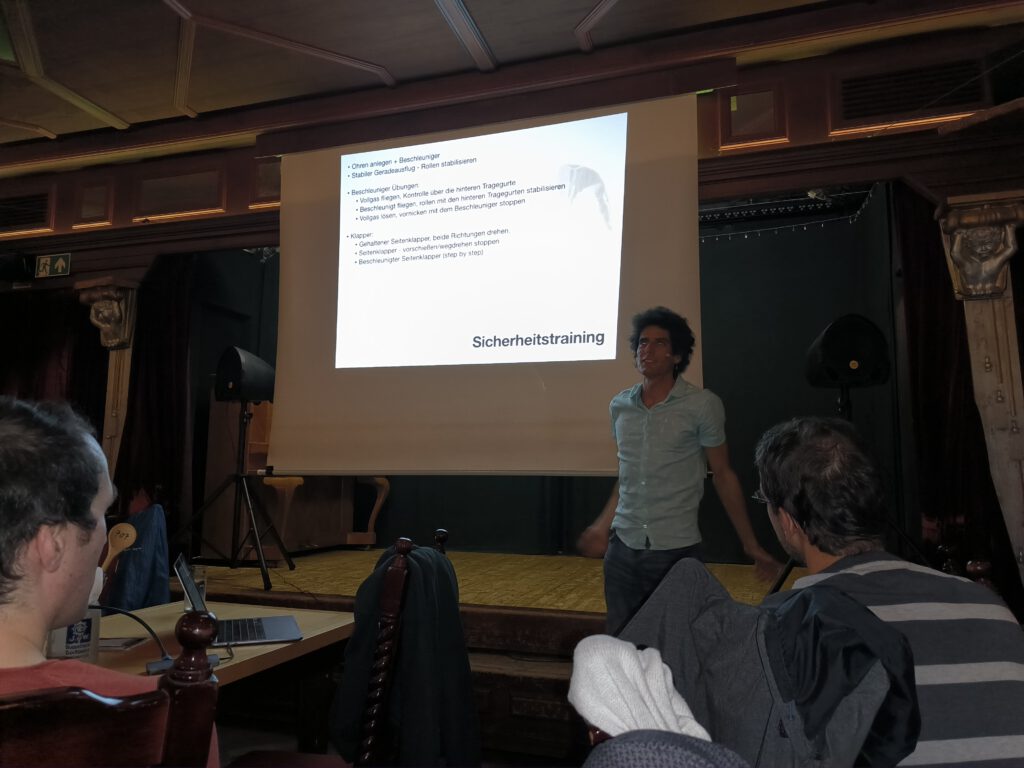
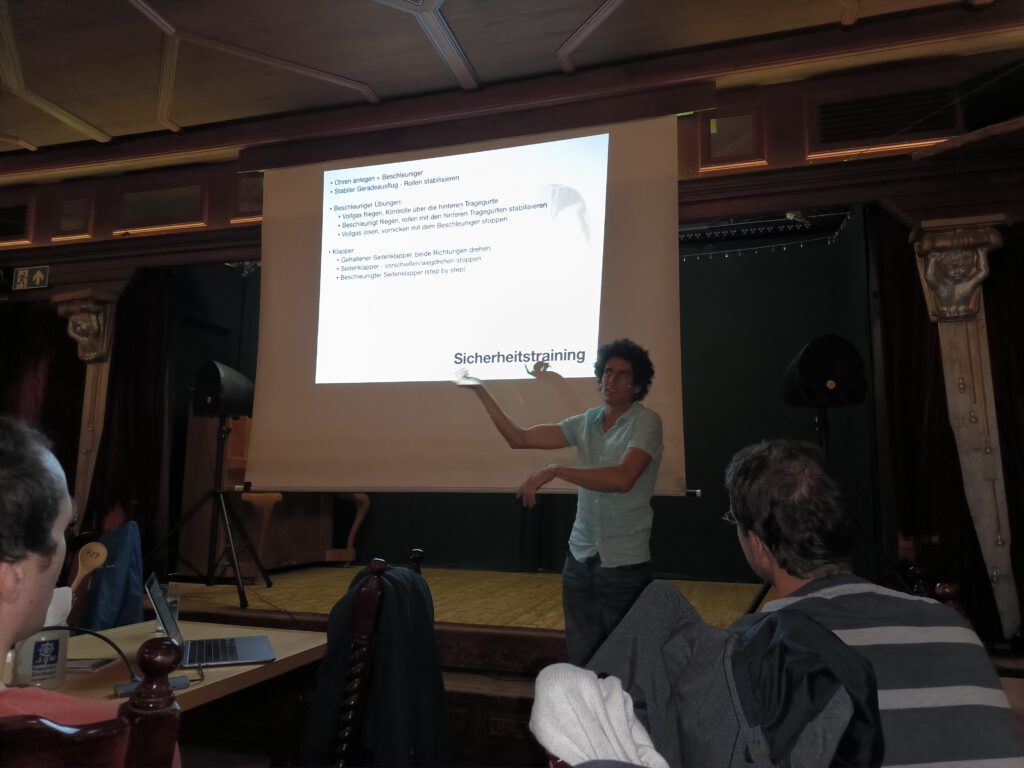
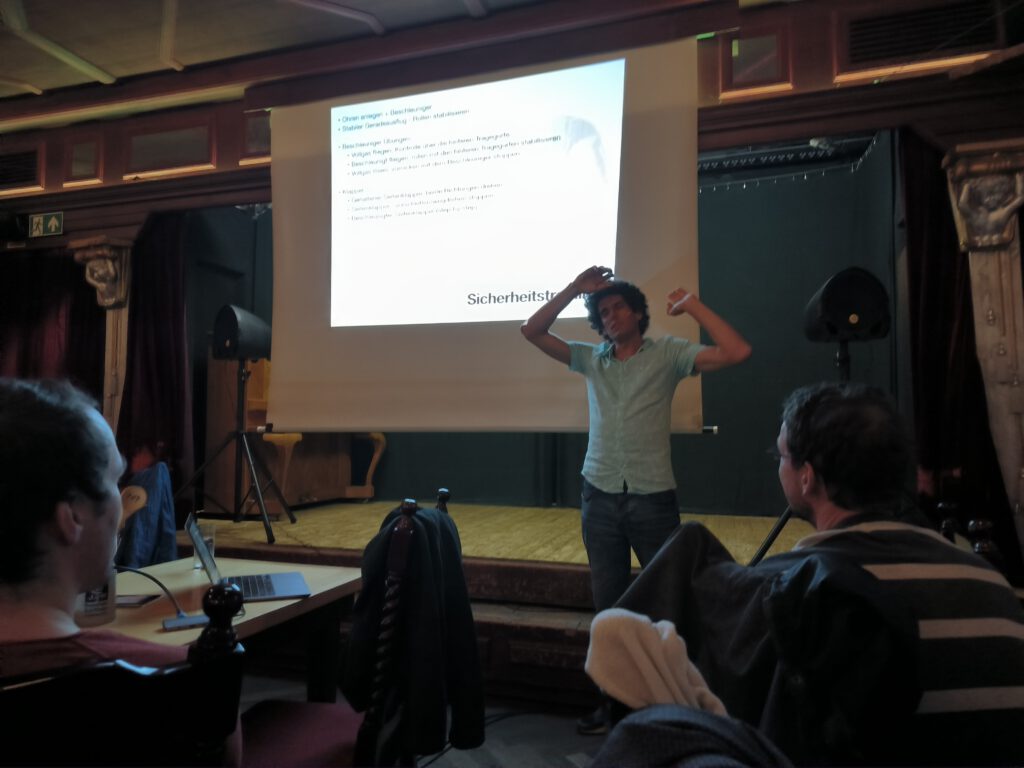
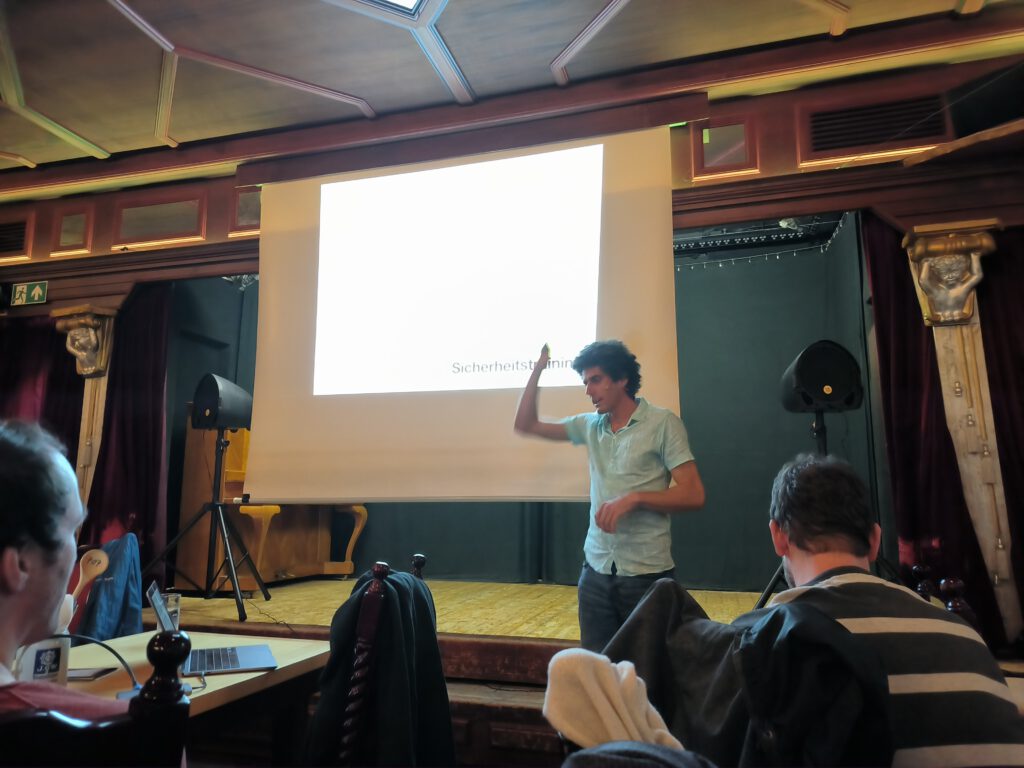
Right at the beginning, Pál asked: How many people are interested in acro flying? About half of us raised our hands, which probably surprised him quite a bit that so many of us were interested in acro flying. Pál briefly recounts the beginnings of his flying: he grew up somewhere in Hungary. Acro flying is difficult or even impossible there because of the lack of mountains. Cross-country flying was also difficult there, as the pilots who were ready to take off had to wait until the flying pilot had gained enough altitude.
Pál saw a video with 2 pilots from Venezuela and was so fascinated by it that he started flying acro. In the beginning, there were no acro wings, but people flew with standard wings. Infinity was not yet possible. Infinity-Tumbling has been around since 2005. 2005 saw the launch of his website justacro.com, which still exists today.
Pál asked us the question: “Why should I become an acro pilot”? His answers: It brings a lot for flight safety, improves glider control, mastery of basic figures means safety.
In his opinion, ground handling is neglected and should be part of the training. Pilots who fly on the dune have the most tricks up their sleeve. His recommendation is to practise constantly.
Safety training is Pál’s recommendation. The following exercises should be carried out as a minimum:
- Big ears with accelerator
- Rolls
- Fly at full speed bar, control with the rear risers
- Fly accelerated, roll, with the rear risers
- Release full speed bar, nod forward, stop with the speed bar
- Held side flaps
- Shoot side flaps forward and turn away, stop
- Accelerated side flap
Video analysis
Finally, there was a video analysis, followed by a selection of incorrect or correct reactions that can be seen in the videos:
- Overreacted after a collapse, resulting in a stall
- Pilot flies into strong thermals, what follows is a stall and deep stall
- Collapse with stall, pilot produces a short stall and the stall could be released, but the glider shoots forward, could be intercepted
- Glider with a large collapse, followed by a turn away and shooting forward. Pilot does not pull enough on the open half
- Attempted French pitch, pilot does not intercept, resulting in a rescue throw
Pál recommends half a stroke when thermalling, releasing the outer brakes completely and holding on to the riser if necessary.
X-Alps
Finally, we were shown a video of his participation in the X-Alps, which has since been published on YouTube.
Conclusion
During Pál’s presentation, you could really feel the passion he has for acro flying. I think many of us were reminded once again how important it is to continue our training in this area.
